Guest Blogger: Andy Nash
Gustavus, AK. June 25, 2013 – As our research trip to Glacier Bay National Park and Preserve winds down we have some time to reconnect with the world and share some stories from our trip. The first half of our trip in the park was spent in Wachusett Inlet sampling logs and stumps that were killed during the advance of glaciers. Our group of Dr. Wiles, Jesse Wiles, Abby Vanlueven, and myself set up camp on June 19th on the south side of the inlet as close to Carroll Glacier as we could get. Our camp was next to an alluvial fan, which had a stream fed by snow melt running through it. This camp made the perfect home for our 5 day stay. We were lucky to get great weather our entire stay in Wachusett Inlet. The temperature ranged from 70-80° F and it only rained once at night while we were in Wachusett.
Day 1
After camp was set up on day one the group kayaked and took a hike Northwest of the inlet and onto moraines formed recently by Carroll Glacier. This served as a way for us to get acclimated to the area and also to scout out potential sites for further investigation. On this hike we saw plenty of bear sign and moose activity but unfortunately we didn’t see either of the animals during our stay in Wachusett.
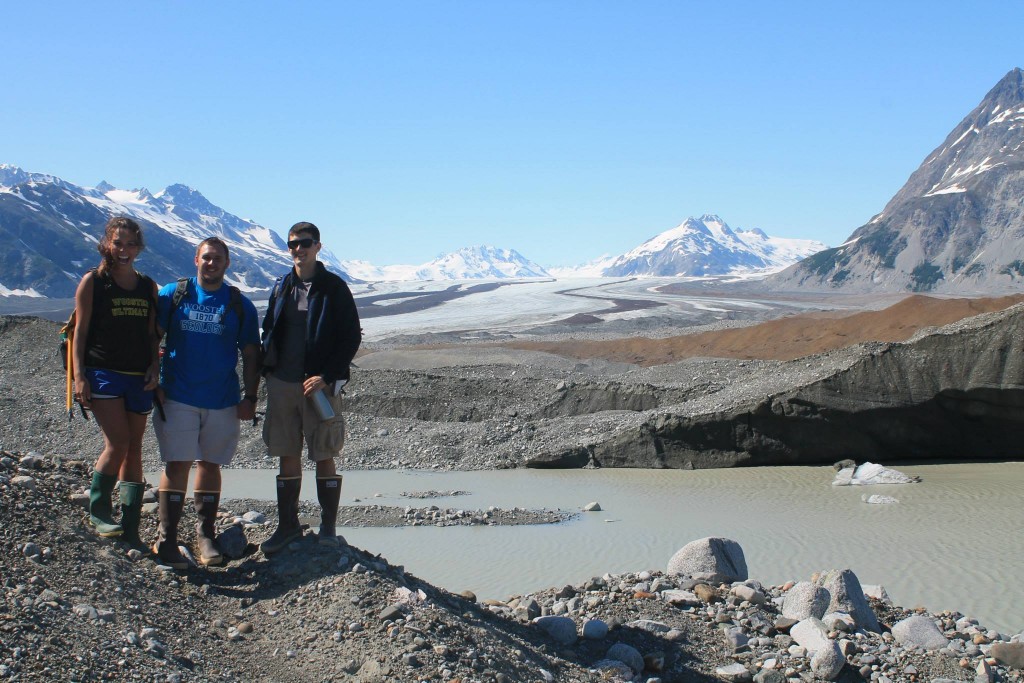
Our group: Abby Vanlueven ’14, Andy Nash ’14, Jesse Wiles (left to right) standing on Carroll Glacier’s ice-cored moraines
Day 2
On day two we sampled logs on the outwash plain to the north of Wachusett Inlet. This outwash comes from Cushing and Burroughs Glacier which are located north of Wachusett and Carroll Glacier. I described the stratigraphy of this valley cut by outwash as well as collecting core samples from detridal logs. As we hiked around this outwash plane we came across some birds that were not pleased with how close we were to their nests. They were relentless in protecting their eggs, swooping in from all angles and diving right at our heads. They only stopped when we retreated back to our kayaks. We finished off our day by running up two valleys on either side of the inlet to see if the river had eroded away any sub-fossil wood.
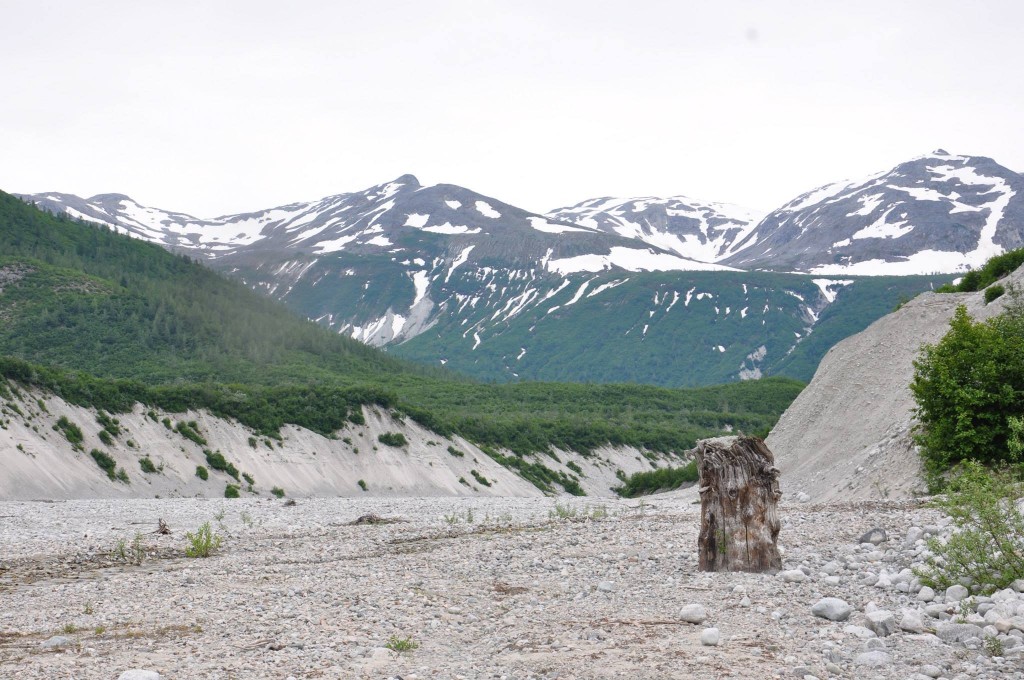
The valley north of Wachusett Inlet which was once the site of an ice dammed lake (1960s) and is now being cut down by glacial outwash streams
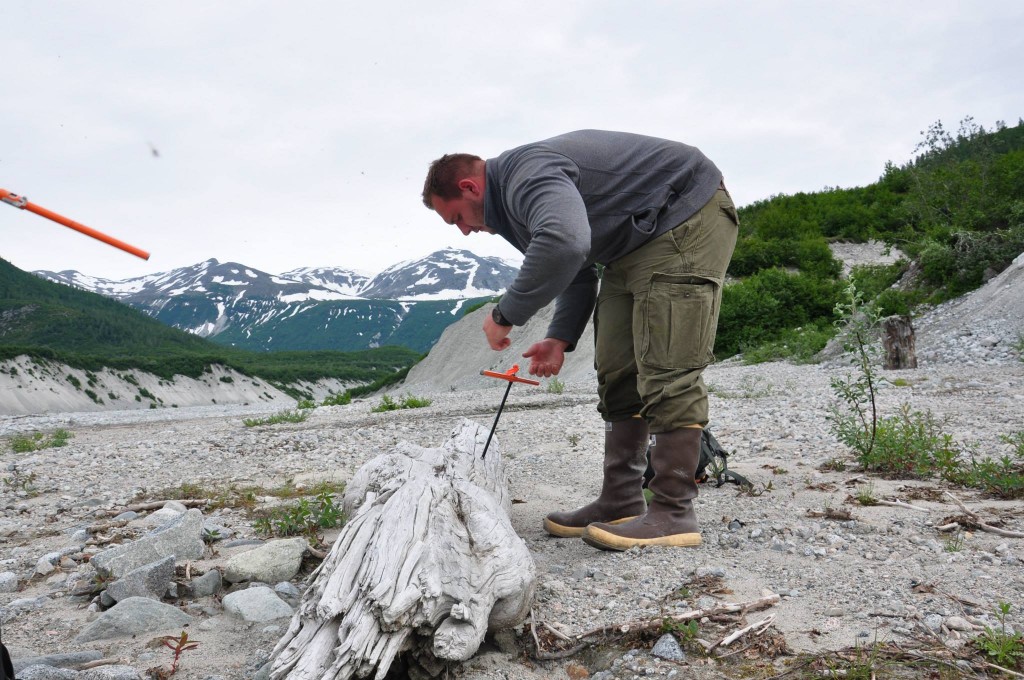
Coring a log in the valley
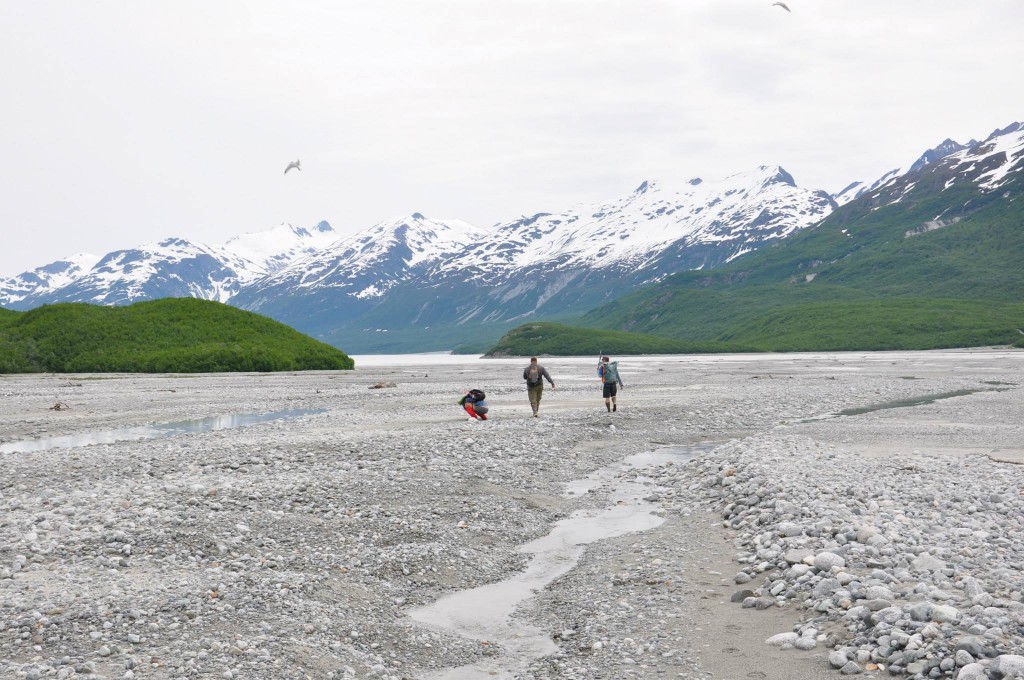
Our group’s typical reaction to bird attacks
Day 3
Day three of our Wachusett Inlet adventure might be the most painful day for me to recount. I don’t think I will ever forget June 21, 2013. We didn’t realize until after that our longest day also coincided with the summer solstice. One this day we hiked from Wachusett Inlet to Queen Inlet by crossing over the glacial moraines we hiked up on day one. What was different on this day was the discovery that some of these glacial features had remnant ice under their slopes. This made for some interesting scrambles up slippery sand covered ice slopes, lots of frustration, and assistance from the ice ax. We estimated that after 6 hours and about 9 miles of tough hiking, we finally reached Queen Inlet. The outwash plane was massive, about 1 mile wide and 2 miles long. For all of that work we were rewarded with cores from 4 samples. Luckily the great views and feeling of invincibility we got after completing that hike overcame the soreness and fatigue when we woke up the next day.
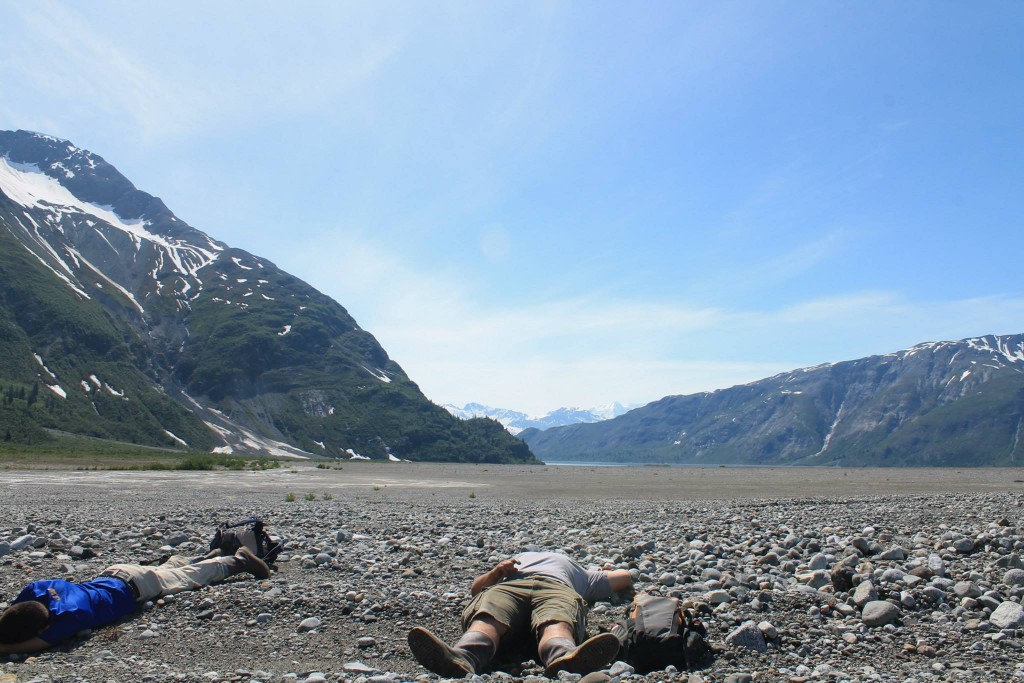
One of the two naps we took in Queen Inlet
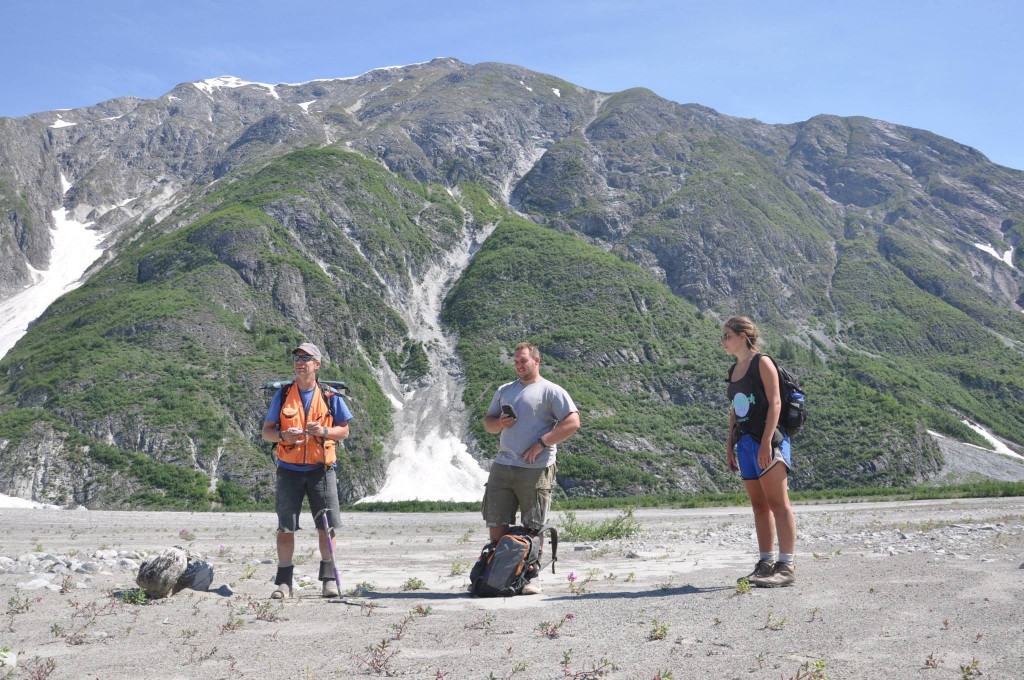
Searching for logs to sample
Day 4
After our expedition the previous day we all agreed that day four would be a recovery day. We took a little paddle down the inlet to core logs brought down to alluvial fans by streams much like the one we camped at. Today ended up being our most productive day. In total we sampled over 25 trees and took more than 40 cores. We called it an early day and went back to camp to play some cards which proved difficult with the wind and the bugs.
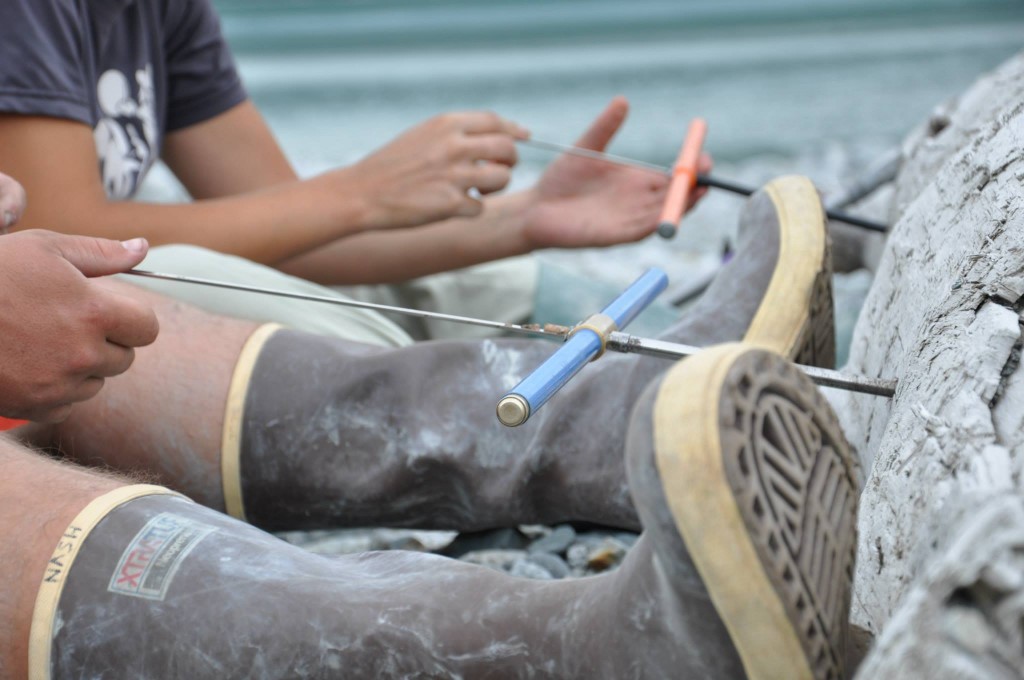
Abby and I extracting cores from a hemlock log
Day 5
Our final full day in Wachusett Inlet was dedicating to cover the last bit of ground that we hadn’t covered in the previous four days. We hiked back up to the moraines but turned north away from Queen Inlet (Thankfully). Our attempt was to go back to the outwash plain from day two and sample from the western side which was blocked off by a river. We soon learned that out effort were all for not as another outwash river came off of Carroll Glacier creating a wedge of inaccessible land between the two rivers. This was disappointing because I had hoped to describe the stratigraphy of this valley wall which was exposed a little bit better than the other side.
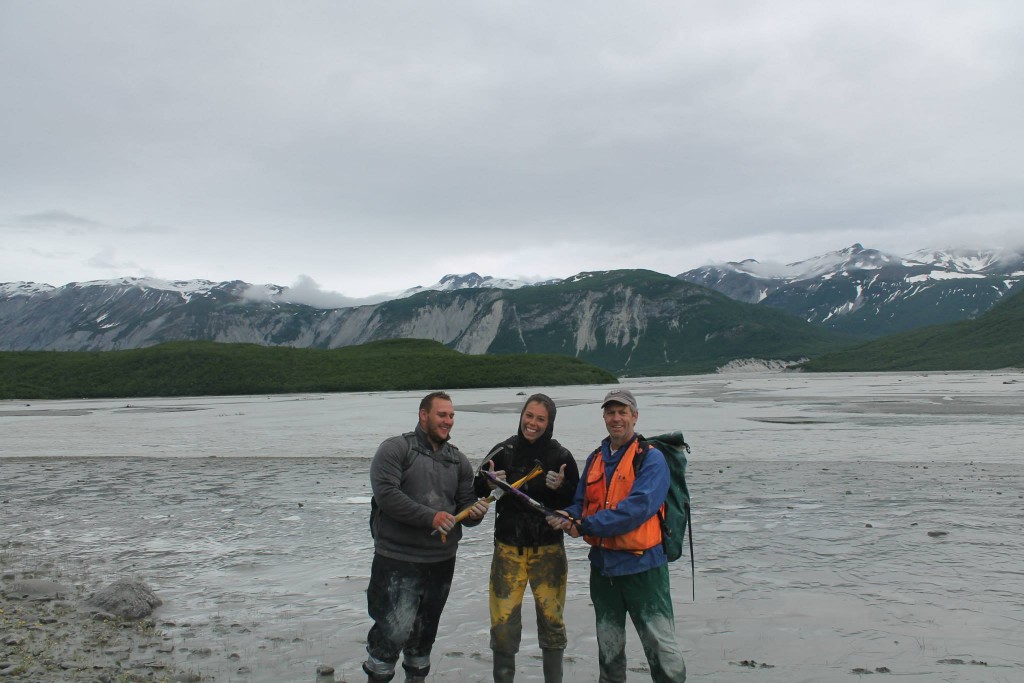
Nobody was safe from the mud on our last day. Abby had a tough time not getting stuck
We decided that the only motto that was appropriate for our trip to Wachusett Inlet was, “We looked it in the eye.” We covered every area at the head of Wachusett Inlet where sub-fossil logs could have been found. Our adventure in Wachusett might have come to an end but we still have more to report on as we spend some time on Marble Mountain and in Gustavus with plans to core living trees now. Be sure to watch for the next post from Abby about our further travels in Alaska.



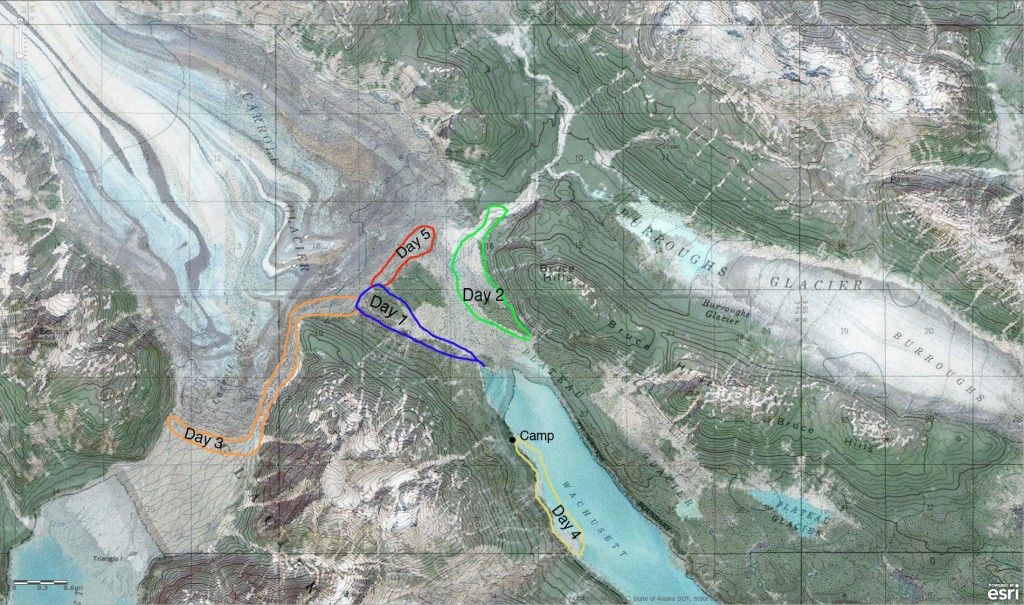
Very well written, Andy, and a great story! (Although I was sure there would be a bear at the end looking you in the eye.) The photographs are especially good. Someone knew what they were doing with the camera.